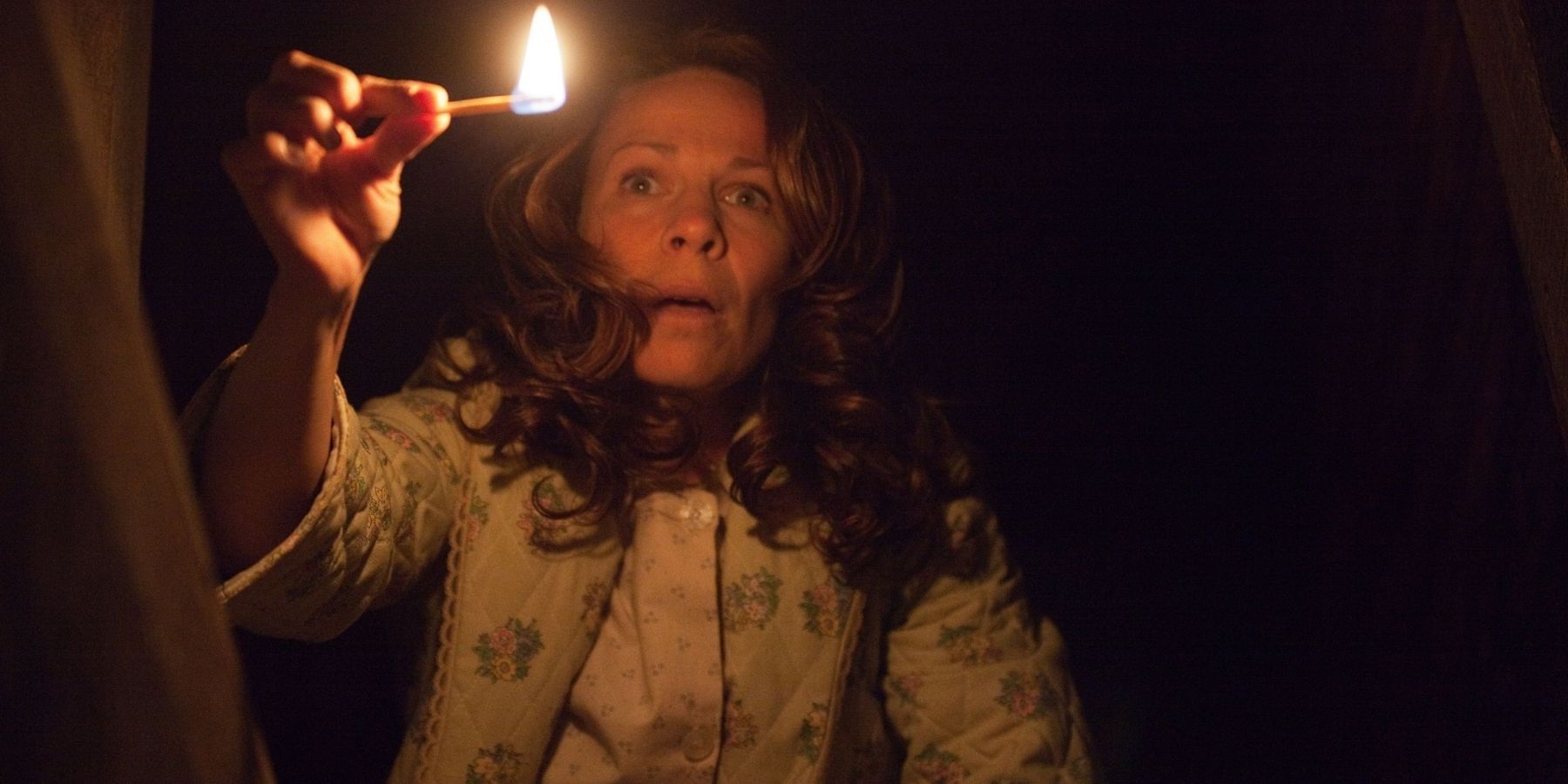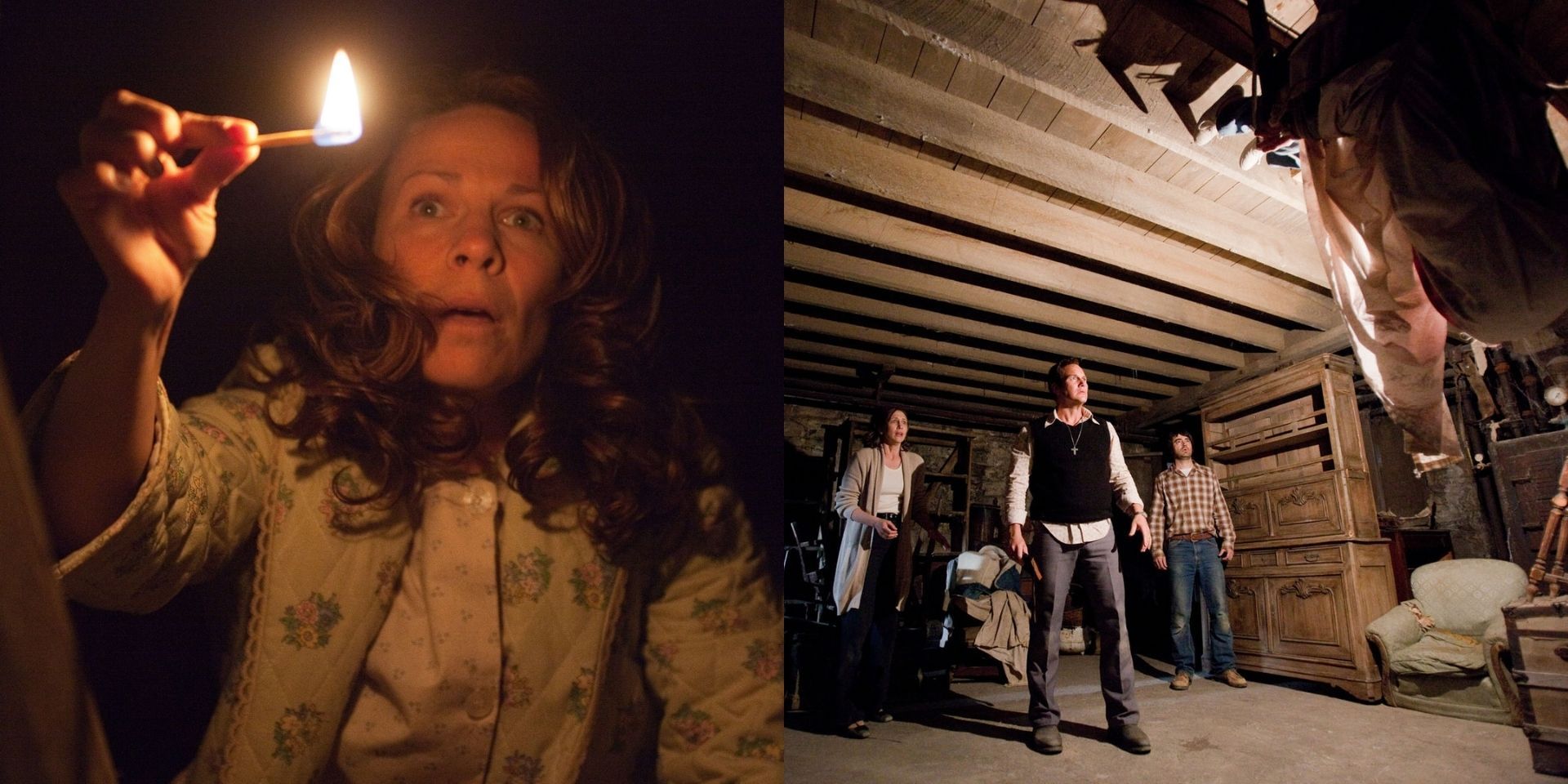There are many tropes in horror movies that, while predictable, still make the audience jump in their seats or at least know something is going to go horribly wrong for the protagonists. While many movies turn to those techniques in the hope of hitting their scare target, there are iconic films that use the tropes so effectively that the viewers can only tip their hats to the masters and enjoy the nightmares after.
Suddenly extinguished lights, lonely rolling balls, creepy children, ideally singing an even creepier lullaby, are among many elements that serve as unmistakable indicators of the horror genre and allow the audience to brace themselves for the scare ahead. Haunted houses usually come with ghosts suddenly appearing in the mirrors, separated teenagers are bound to fall victims to masked serial killers, and explorers wandering through abandoned asylums at night figuratively scream, "kill me in the most brutal way possible."
Unfortunately, many movies rely on these elements and hope that they will be enough to deliver a good horror experience. However, some films use the techniques sparingly but so successfully that they spawn many imitations and rightfully deserve a place in the Horror Hall of Fame.
The Innocents: The Haunting Music Box
Music boxes, especially the ones that start playing of their own volition, are recognizably creepy. Some of them achieve the unsettling effect with a merry tune that contrasts the otherwise dark setting, some play a sad and haunting melody that alludes to the tragic backstory of the seemingly evil ghost, and some just conveniently distract the protagonists from a monster behind them.
1961 Jack Clayton's The Innocents is an adaptation of Henry James' horror novella The Turn of the Screw and famously features a haunting 'O Willow Waly' song that is eventually played in the musical jewelry box. In the scene, one of the main characters dances to the tune in a gazebo that, from a distance, looks just like the music box with the ballerina inside it — it's both beautifully cinematic and eerie. Many movies have used this trope since (The Conjuring, The Haunting, even the obviously titled The Music Box), but few were as successful. Mike Flanagan has paid homage to The Innocents in his The Haunting of Bly Manor and fittingly featured the same tune throughout the series, as well as the actual music box.
The Conjuring: The Sinister Basement
Matched only by boiler rooms and attics, in horror movies, the basement is usually home to all things nasty. Something about the dark, damp space and forgotten items that are stored there make a basement a perfect setting for jump scares.
While many movies feature memorable basements and their contents — from the selection of artifacts that will determine the heroes' fates in The Cabin in the Woods to the Necronomicon with forbidden Latin in Evil Dead — James Wan's The Conjuring, arguably, does it best. It manages to masterfully combine several tropes, from the character desperately using matches to see in the dark to the creepy child laughter to the famous "Want to play Hide and Seek?" clap of the ghostly hands. While all those elements are common and predictable on their own, combined with fitting music, careful set-up, and expert camera work, they come together to create one of the most spine-chilling and memorable scenes.
A Nightmare on Elm Street: The Eerie Nursery Rhyme
Nursery rhymes and lullabies are supposed to lull children to sleep and calm them down. They are associated with an innocent and happy time. Perhaps, that is why, when appearing in horror movies, they are so successful at creating an eerie atmosphere that suggests that something is amiss.
The "One, two, Freddy's coming for you" nursery rhyme, recited by children, jumping a rope, in A Nightmare on Elm Street is arguably one of the most famous and successful uses of the now-common trope. It sets the mood and gives the audience a heads-up on what's coming rather than warning the protagonists. There were many other uses of this eerie trope — from Samara's creepy song that she sings before being suffocated and tossed in a well in The Ring to the lullaby in The Haunting to even the "Tick Tock Goes the Clock" warning used in Doctor Who — but Freddy's simple and memorable rhyme has truly become the modern classic.
The Descent: The Night Vision
This trope works on the oldest fear of the dark and someone (or something) hidden there, watching, without being seen. One of the most memorable uses of this technique can be found in The Silence of the Lambs, where Clarice is being watched and silently followed by Buffalo Bill.
However, the claustrophobic The Descent, filled with many excellent scares, takes this trope to the next level. One of the heroes uses the night vision feature on a camcorder to get her first glimpse of what lurks in the cave that they are trapped in. Many movies have attempted the night vision technique after — including REC, Sinister, Cloverfield, and others — but none have quite achieved the same terrifying effect.
Friday the 13th / The Ring: The Sudden Mirror Reveal
It's close to impossible to choose the absolute winner for this trope. The mirror jump scare, often combined with another classic — "he/she is behind you!" — is perhaps one of the most popular yet still effective horror movie techniques out there. It comes in many forms, from the villain appearing in the mirror after the hero/victim has adjusted its angle (the medical cabinet mirrors are especially notorious for it) to the reflection turning on the characters (Mirrors and its sequel are built around this notion) to the mirror being an actual cursed subject (Flanagan's Oculus does a great job portraying the murderous Lasser Glass).
However, Friday the 13th has used this technique so much — with Jason consistently appearing behind weirdly unsuspecting people who insist on splashing water on their faces or opening/closing the medical cabinet — that it became almost synonymous with the franchise. On the other hand, The Ring takes the prize for the trope's most creepy and unsettling use. Its protagonist discovers that Samara is haunting him after he takes his picture in the mirror, with the ghostly girl appearing closer and closer with each shot.
The horror tropes might be predictable, common, and even overused, but the fact remains the same — if done right, they still work like a charm. And while the audience might think they know what's coming, it doesn't stop them from jumping out of their seats and, at the same time, enjoying the ride.






